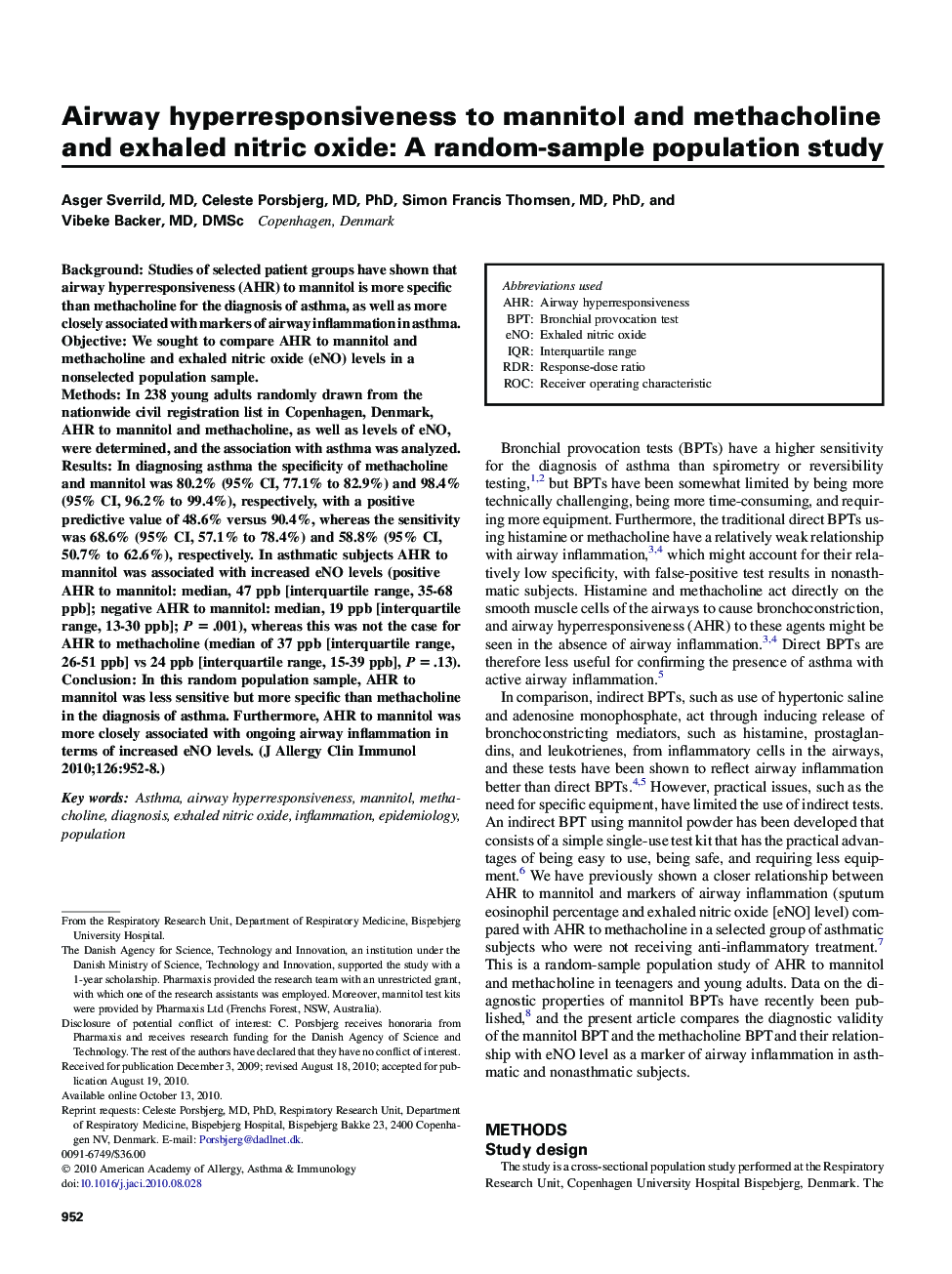| Article ID | Journal | Published Year | Pages | File Type |
|---|---|---|---|---|
| 3199294 | Journal of Allergy and Clinical Immunology | 2010 | 7 Pages |
BackgroundStudies of selected patient groups have shown that airway hyperresponsiveness (AHR) to mannitol is more specific than methacholine for the diagnosis of asthma, as well as more closely associated with markers of airway inflammation in asthma.ObjectiveWe sought to compare AHR to mannitol and methacholine and exhaled nitric oxide (eNO) levels in a nonselected population sample.MethodsIn 238 young adults randomly drawn from the nationwide civil registration list in Copenhagen, Denmark, AHR to mannitol and methacholine, as well as levels of eNO, were determined, and the association with asthma was analyzed.ResultsIn diagnosing asthma the specificity of methacholine and mannitol was 80.2% (95% CI, 77.1% to 82.9%) and 98.4% (95% CI, 96.2% to 99.4%), respectively, with a positive predictive value of 48.6% versus 90.4%, whereas the sensitivity was 68.6% (95% CI, 57.1% to 78.4%) and 58.8% (95% CI, 50.7% to 62.6%), respectively. In asthmatic subjects AHR to mannitol was associated with increased eNO levels (positive AHR to mannitol: median, 47 ppb [interquartile range, 35-68 ppb]; negative AHR to mannitol: median, 19 ppb [interquartile range, 13-30 ppb]; P = .001), whereas this was not the case for AHR to methacholine (median of 37 ppb [interquartile range, 26-51 ppb] vs 24 ppb [interquartile range, 15-39 ppb], P = .13).ConclusionIn this random population sample, AHR to mannitol was less sensitive but more specific than methacholine in the diagnosis of asthma. Furthermore, AHR to mannitol was more closely associated with ongoing airway inflammation in terms of increased eNO levels.
